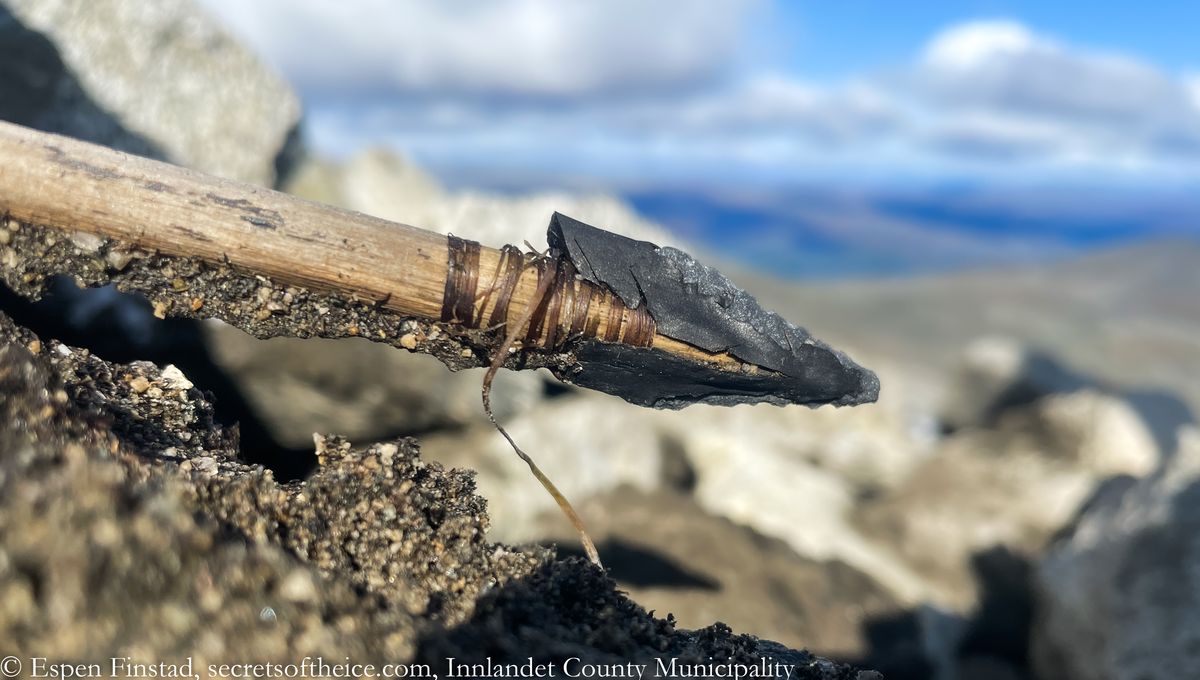
Archaeologists with the Secrets of the Ice project have discovered an ancient arrow that was preserved in ice for 3,000 years. The specimen displays its quartzite head, the fibers used to fasten it to the shaft, and the arrow’s feather fletching. It is a remarkable find.
The Secrets of the Ice project is run by archaeologists who rescue artifacts from the Jotunheimen Mountains of central Norway’s Oppland region. Over the last decade, the team has recovered thousands of specimens from glaciers and ice patches that are melting because of climate change. As the ice melts, it is revealing more and more information about ancient peoples who used to hunt and live in these mountains.
Although the material revealed by the disappearing ice is yielding amazingly preserved artifacts, it is nevertheless a complicated situation. Not only is this the result of human impact on the planet, but the newly exposed artifacts themselves can quickly deteriorate if they are not recovered quickly.
The arrow was discovered on September 13, 2023, by Espen Finstad, an Ice glacial archaeologist who was monitoring a newly exposed area along the edge of the ice.
According to their analysis, the arrow shaft is made of birch, and it still had its fletching – the feathery bits at the end of the arrow that help stabilize its flight. Under normal conditions, the fletching on historical arrows would rot away over time, but this example is completely preserved.
The arrow’s head is made from quartzite, which comes from quartz-rich sandstone or chert that has been exposed to high temperatures and pressures. The head has been covered in pitch, probably from birch charcoal, which was used to help secure it to the smooth arrow shaft.
“Arrows with preserved arrowheads still attached are not uncommon during the Iron Age on our ice sites,” Lars Pilø, the archaeologist who heads the Secrets of the Ice project, told Live Science, “but this early they are very rare.”
Although its details are well preserved, the arrow itself has not remained whole. It is likely that the pressure of the ice caused it to snap into three distinct pieces.
It is likely that this arrow was used for hunting reindeer. It and similar discoveries are extremely important for historical research. They provide a wide range of information for archaeologists, which can tell us about hunting behaviors in these high-altitude locations.
Source Link: Exceptional 3,000-Year-Old Arrow With A Quartzite Head Recovered From Melting Ice